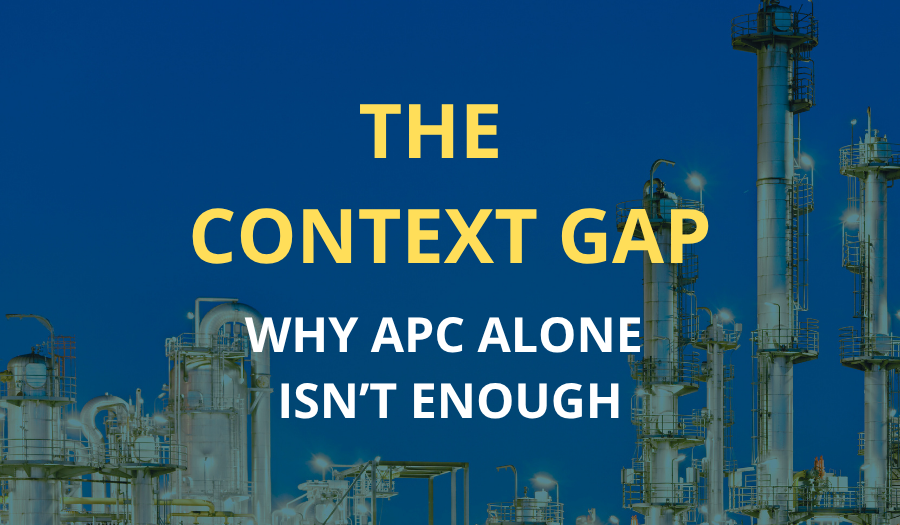
Beyond the Algorithm: Why People Decide APC’s Fate
An APC controller might be mathematically perfect — but if it ignores maintenance schedules, product orders, or safety routines, it won’t stay online.
“Operators don’t run plants with just APC. They run them with APC, planning, maintenance, and scheduling — all at once.”
The Context Gap

In theory, APC pushes operations closer to constraints and optimizes margins.
In practice, operators must juggle a dozen priorities:
- A unit scheduled for turnaround next week.
- A product order that requires a grade change.
- A safety bulletin that mandates conservative limits.
- A compressor running near maintenance hours.
If APC recommendations don’t reflect these realities, trust erodes. Operators see a smart controller — but one that is blind to context.
Why Context Matters More Than Math
-
Planning vs. optimization
If planning requires a cutback to align with downstream demand, APC pushing throughput becomes counterproductive.
-
Maintenance constraints
A piece of equipment near inspection may force softer limits than the model assumes.
-
Scheduling dynamics
Shift handovers bring new priorities, from blending targets to inventory management.
-
Safety overrides
Operators are rewarded for protecting the unit, not maximizing an objective function.
APC alone cannot reconcile these. Without a bridge to the bigger picture, it risks being seen as a nuisance — not an asset.
Lessons from the Field
Case: Ignoring context
A reformer APC consistently recommended higher severity to improve yields. Operators rejected it, knowing the hydrogen compressor was overdue for inspection. The APC looked “wrong” — but it wasn’t wrong, just unaware.
Case: Integrating context
At another site, controllers were coupled with daily planning input and maintenance alerts. Operators saw the “why” behind recommendations aligned with the broader site plan. Result: higher usage, fewer overrides, and consistent ROI.
How to Put People and Context at the Center
-
Connect APC to planning and scheduling
Optimization must reflect demand forecasts, grade schedules, and unit availability.
-
Integrate maintenance signals
Equipment status, run hours, and upcoming inspections should inform constraints dynamically.
-
Institutionalize context in shift routines
Make controller status part of shift handovers, tied to operational priorities.
-
Translate math into operational language
“Reducing reflux for 3% energy saving” is stronger when paired with: “Maintenance scheduled on reboiler next week; conserving duty extends uptime.”
Why This Matters Now
- Thin margins: Every suboptimal decision compounds into millions annually.
- Sustainability: Uncoordinated moves waste energy and CO₂ headroom.
- Generational turnover: Institutional knowledge about planning/maintenance context is at risk of being lost unless captured and connected.
The Road Ahead: From Optimization to Transparent Coordination
Operators don’t resist optimization. They resist optimization that ignores the rest of their job.
The future of APC lies in systems that:
- Bring planning, maintenance, and scheduling into the same conversation.
- Explain not just the move, but the fit with today’s context.
- Preserve operator knowledge about “why this matters now” for the next shift.
The value of APC isn’t in being installed — it’s in being used. And to be used, it must see the whole picture.

